While an active Japanese American community doesn’t live there anymore, it’s still culturally important here in the Puget Sound region.
And definitely worth
a visit.
Nihonmachi’s numerous old and newer buildings are scattered
across a south-facing hill tucked on the southeast edge of downtown, in Seattle’s
International District. It’s an eclectic
mix of historic buildings with modern boutiques and galleries, Japanese
restaurants, and a hillside garden park.
The destination businesses are centered on the block between South
Jackson Street, 6th and 7th Avenues South, and South Main Street. |
| Looking south on Seventh Avenue South in Seattle's historic International District |
I can’t quite pin down why I’m so drawn here (and the
International District in general). I
suppose for a variety of reasons—the historic charm of the low-rise brick and stone
masonry buildings, the sense of history the district evokes, the intriguing
East-meets-West and old-meets-new vibe, and of course some of my favorite
businesses there.
Panama Hotel TeahouseAs I often suggest to out-of-town visitors, last weekend I met friends for tea at the Panama Hotel Teahouse up the hill on South Main Street. About 10 years ago this serene space was renovated and reopened as a lovely teahouse in the old Panama Hotel. With exposed brick walls and gleaming refinished wood floors, the teahouse is a relaxing spot to meet friends, read a book, write, or just enjoy the fine tea and maybe a delicate wagashi confection made by Chef Chika Tokara in north Seattle.
 |
| Seasonal artisan wagashi by Tokara served at the Panama Hotel Teahouse |

It’s also a bit of a museum. Framed black and white photographs of the district from the pre-World War II era line the walls, when Japantown was a thriving community of Issei (first-generation) and Nisei (second-generation) Japanese Americans. As detailed in the bestseller novel The Hotel at the Corner of Bitter and Sweet, which features the Panama, the formerly bustling Nihonmachi was decimated when Japanese-American families were forced from their homes and businesses to internment camps here on the West Coast.
 |
| Photos from pre-World War II Japantown |
 |
| The Panama Hotel back in the day |
Cullom Gallery
[Cullom Gallery no longer is in this space and has converted to a pop-up, online gallery] Next door to the Panama Teahouse on South Main, petite Cullom Gallery features contemporary and historic Japanese and Japanese-influenced woodblock prints and paper art. I’ve got my eye on one of artist Kristina Hagman’s 36 Views of Mount Rainier prints, an ode to the famous Hokusai and Hiroshige series 36 Views of Mount Fuji woodblock prints.
 |
| Collum Gallery is one door south of the Panama Hotel Teahouse |
Kaname and Maneki Restaurants
Maneki, which claims to be Seattle’s oldest restaurant at over 100 years, is just around the corner from the teahouse and gallery on Sixth Avenue. It has a bit of a hole-in-the-wall look out front, which is just as well. This popular spot is often crowded, especially on weekend nights. Yelpers rave about the black cod collar bone, but my tastes run toward the perfectly prepared soba noodle bowls.
Down the hill on the same block, but on busy Jackson Street, Kaname specializes in classic, rustic Japanese fare. The interior is charmingly decorated like an authentic old Japanese noodle joint.
 |
| Stop in Kaname for a steaming bowl of noodles |
Right next door to each other at the corner of 6th and
Jackson, Momo and Kobo at Higo are destination shops. Momo’s friendly owner Lei Ann
Shiramizu was featured in Seattle Magazine for her great
sense of style, and Momo reflects her varied and impeccable taste. I’ve purchased
numerous gifts here, from an antique clay sake jug to an authentic Saint James
French sailor shirt. Momo is part high-fashion boutique, part gift shop, and always
fun to shop.
In a nod to history, Kobo has maintained the original Higo
sign and some old fixtures from Higo’s 73 years as a family general store.
Today Kobo sells exquisite artisan ceramics, woodwork, jewelry, prints, books, silk
scarves, and more, with an eye to Japan. When in need of inspiration for gifts, I
always find something at Momo or Kobo. |
| Unique gifts and clothes with flair at Momo |
 |
| Kobo's has preserved portions of the old Higo store in their artisan gallery shop |
Fuji Bakery
If you want a snack, scoot a block south of Jackson Street beyond the Nihonmachi boundary to Fuji Bakery, named one of Seattle’s top ten new places to eat in 2011. This jewel of a small corner shop features exquisite pastries and baked goods prepared in a classic France-meets Japan style. Beautiful round sesame seed-sprinkled buns sit next to glistening fruit tarts and croissants in the display case. My personal favorite: the seasonal vegetable focaccio.
 |
| Get your fresh veggies in a delectable focaccio at Fuji Bakery |
And how about you? If you're a local or have visited this part of Seattle, what are your favorite places?
When You Go
Click here for a map of the area. Be sure and
check the Seahawks or Mariner’s schedules in the summer and fall because
parking and traffic can get ugly in the I.D. on game days.
When You Go










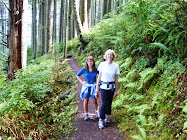

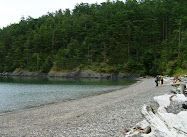
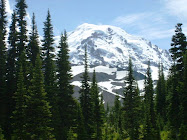


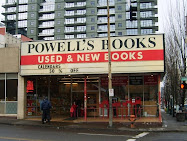
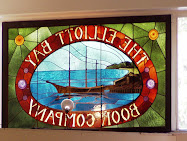
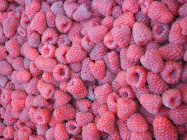
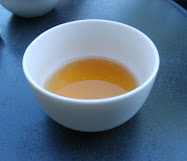
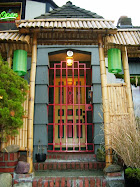


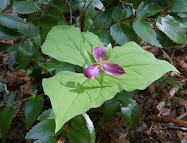

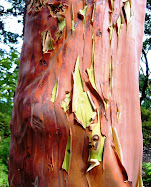

19 comments:
Wonderful post. Thank you.
1. What is a yelper?
2. Nice post, I look forward to going back there sometime. (Maybe to shop for your birthday!)
I love Panama Hotel, Cullom Gallery and Momo! Need to check out the other places you recommend. Fun!
You're welcome, thanks Dave!
Anne, Yelper = people who leave reviews on Yelp.com about restaurants, etc. Thanks....
MM, yes, if you love Momo you'd love Kobo too!
Hey, how come my Seattle friends have never taken me to these places?! I'll suggest Nihonmachi next time I visit. Thanks, Jill.
Hi Patricia! Where are you based? (will check your blog). I'd love to share with you more such cool places to visit next time you come.
cheers.
Terrific post Jill! I am hungry for noodles and tea all of a sudden!
Thought you'd find this interesting, African American, parents married and lived on 5th and Maynard & Jackson next to their bank (Bank of Tokyo) , Wing Luke has special exhibit honoring African American neighbors. My black sensei Jesse Glover was Bruce Lee's best friend and first student. Jose Greco
http://www.josegreco.com/asian-american
Thanks for the comment/info Jose! Really interesting. I hope to do a blog post about Wing Luke soon. I love the ID and the interesting/historical ethnic and cultural mix.
Dear Jill,
It is a pleasant surprise to know interested Seattlites are still discovering The ID, and learning the history of Seattle's Nihonmachi
: which has links to Vancouver BC, Portland Ore., Los Angeles Nihonmachis. I have had the pleasure to enjoy time in all the "Japantowns", and was always impressed with; their admirable stories, art, music movies, education, politics contributions and especially them being a welcoming place of sanctuary for minorities and new immigrants. My generation has been watching and appreciating The ID from the 1940's, on several occasions powers that be desired to destroy it for Freeways , the Kingdome or unwarranted Gentrification.
The ID and the remnants of Nihonmachi are still a vital part of Seattle's city life and history, Inhabitants moved out of the ID to establish suitable residences to raise their growing famlies, but the ID remained a cultural and commercial hub for former residences, families would come as far as Portland Oregon to luxurtiate in it marvelous Asian homogeneous environment. We older inhabitants hope you will come to love, respect and appreciate Nihonmachi as we much as we do, Nihonmachi is truly part of The American Dream realized. Jose Greco
Hi Jill, thought I'd send you some more reflections on beloved I.D., Jose
(Sorry about the typos. ..TBI brain injury so I go over my writing several times. ..and wtill miss stuff . J) dewa matta!
Tempura has a 1600's Portuguese origin, tempura is from the Latin 'ad tempora cuaresme' or 'in the time of Lent', because the 15th Century Portuguese in Japan battered and deep fried non-meat foods preferred during Lent. Fondue cooking and parties were popularized in the 1960's, vistors to Seattle's I.D. flocked to restaurants like Bush Gardens and Tenkatsu for tempura cooking, though fondue pots were popular in the White community the more versatile woke entered non-Asian homes. The handy durable cooking pan, meant one could use the gradient style implement to prepare various items at different temperatures, the wok became an important part of the 60's and 70's Hippie cooking arsenal.
I'd see a lot more eager Seattle shoppers visiting Higo's, Tubo's and small Uwajimaya (originally on Main St.), buying; kitchen appearal like fine cutlery, the ubiquitous rice cookers, great cookbooks, and the small portable barbecue cookers called Habachis.
Our ID variety stores had wonderful products for gardening and flower arranging, and places like the Buddhist Temple and Collins Playfield (15th and Washington), held classes offered to the general public subjects of Asian interests. Today the Buddhist Church on 14th and Main St. ,sponsors the summer Bon Odori Festival, a Children's Summer Program, and many helpful and Iinteresting programs.
Martial Arts was introduced to Seattle by Sam Hill who brought one of our Yamashita Yoshiaki from Japan to demonstrate Kodokan Judo,he then went to Annapolis to train naval cadets & President Teddy Roosevelt. Seattle Dojo (est.1902) up the hill at 1510 South Washington ,has been an important part of Nihonmachi, even the famous actor/martial artist Bruce Lee studied there. In the Sixties I attended special dinners held by Seattle Dojo at the smaller Bush Gardens restaurant in the Bush Hotel on Maynard and Jackson, across the street was the Kokusai Theater. The Kokusai showed Filipino & Chinese movies Monday to Thursday and Toho Film Limited Japanese movies Friday -Sunday. The Toyo Cinema South on Raineer in Columbia City area, as its name implies featured Toyo Studio films, but if Kokusai was featuring I'd go out to Toyo Cinema to watch a "Chanbara" samurai type film. The Kokusai plus the Nippon Kan Theatre up the hill north on South Washington St., both sponsored cultural events and important community ptograms, the Kokusai is gone but Nippon Kan remains an important cultural part of Nihonmachi.
Jose, wow, you're a font of historical information. Thank you for sharing! I will look into this more when I'm not on deadline (for work)...back at you, take care.
Nakama (friend)
Thinking about you wanted to expand you boundries of The ID from 5th Ave up to 15th, they are all
Interconnected and now you can shop at 'What did ja buy me "Portland Uwajimaya as my little sister called them, my mentor F.S. Fujii lived on Mercer Island- worked at SCC Broadway - and was a legitmate icon in the ID. Thought I'd send you a "map", use the info as is helpful, any questions please contact me.
Oregon Nikkei
Helped build this center when visiting family.
http://www.oregonnikkei.org/
Honored visitors to Seattle Nihonmachi on several occasions, saved 6000 Jews during WWII.
http://www.jewishvirtuallibrary.org/jsource/Holocaust/sugihara.html
Mexican American Guy Gabaldon raised in 1930's Los Angeles' Nihonmachi ("J-Town")learned Japanese and spent most of his time with his Nisei Japanese family, when Executive Order 9066 sent them to internment camps, Guy join the U.S. Marines as a Japanese language interpreter. His love and compassion for Japanese people, helped Guy single handed captured more than 1,200 Saipan Japanese soldiers and civilians, and convinced his Marine superiors that the Saipan Japanese inhabitants could be saved rather than wiped out.Guy was able to save the lives of his comrades and indigenous personal,because growing up in La's (Nihonmachi) "JTown" had given Guy the love, compassion and understanding, to act as a bridge of peace for the military and his adopted Japanese family's people.
East LA Marine Movie: http://www.imdb.com/title/tt1265593/plotsummary
Guy Gabaldon Website: http://guygabaldon.com
History of Seattle's International District - YouTube
-----------
1980's local Seattle film about Seattle Nihonmachi which became Chinatown/International District (I.D), great informative film.
Jose Greco
Akemashita Omedeo Gozaimasu
Have A Happy New Year
Jose Greco
I decided to tweet some relaxant info about Japanese culture
#mrjosegreco
As a child in 1963 we made Japanese style battling kites to fly or do battle we used; white butcher paper for construction that we oiled,painted and added hooks and razor blades to defeat opponents. We were at a disadvantage fighting against our Filipino friends; who had sleeker more aerodynamic shaped kites,with long tails to help the swoop down and attack. The Bon Marché (Macy's) used to have a 25 foot kite designed on site by a Japanese master kite maker, saw photos of it - Very Impressive!
Shirone Kite Krazy Information
http://niigata-nishikigoi.com/node/812
"Shirone Kite Battles Videos
Shirone Kite Battles 1 (1 of 2): http://youtu.be/EM0z4mASWCA
Shirone Kite Battle 2 (2 of 2): http://youtu.be/yCZZDw2k-v4
http://mrjosegreco.wordpress.com
@mrjosegreco
Hello, putting a lot of things Japan and Asian on my Twitter account @mrjosegreco;Asian, Japanese, Yuri Kochiyama, Nihonmachi, et at.
Post a Comment